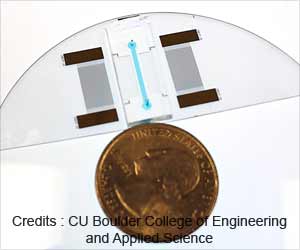Sickle cell anemia is a devastating blood disorder that can cause early death. With advances in gene therapeutics, new study focus on correcting the disease at the genetic level.
- Sickle cell disease is a blood disorder and the only available cure till now is a bone marrow transplant (BMT)
- However, experimental gene therapy has brought in a new ray of hope and helped a number of children and young adults get rid of the devastating symptoms
Facts and Statistics about Sickle Cell Disease (SCD)
- Around 100,000 people in the U.S are estimated to suffer from SCD
- Globally, around 300,000 children and adults have this condition
- SCD is one of the most common genetic disorders in the world with debilitating symptoms often leading to disability and death
- Treating the disease and its complications are expensive to costs amounting to nearly $30,000 annually for adults.
- A one-time cure may work better, in the long run, both economically and for the health of patients.
Read More..
Experimental Gene Therapy to Cure Sickle Cell Disease (SCD)
Several groups of researchers are currently working on one-time curative gene therapy for SCD. SCD was one of the first single-gene disorders considered amenable to corrective gene therapy.One of the key researchers is Dr. David Williams, president of the Dana Farber and Boston Children’s Cancer and Blood Disorders Center. Dr. Williams is the Chief scientific officer and senior vice-president of Boston Children’s hospital and also a professor at Harvard Medical School. He has been working on SCD since the last 30 years and has recently been involved in experimental gene therapy to cure SCD.
Other researchers include Dr. Alexis Thompson, an SCD specialist at Northwestern University who was involved in this therapy. One of the first patients to receive a functional beta-globin gene via gene therapy from Bluebird bio is Brandon Williams.
Williams no longer suffers from painful symptoms or requires regular blood transfusions. These pioneering trials have greatly benefited suffering patients. Carmen Duncan (20) was also one such patient who received the Bluebird bio gene therapy. She is now free of SCD.
Currently, scientists are testing three approaches to curing SCD. The approches include:
- First is traditional gene therapy using a viral vector to insert a functional copy of the missing/mutated gene
- Second is turning on the gene responsible for fetal hemoglobin production. This gene is active in the fetus but turns off after birth so that adult hemoglobin kicks in. However, turning on this gene can increase the total hemoglobin in the body
- Third approach to curing SCD is gene editing using CRISPR to cut out parts of the gene and insert functional sections
References:
- Gene Therapy Advances Offer Hope For Sickle-Cell Disease Cure - (https://www.wbur.org/onpoint/2019/01/28/sickle-cell-disease-gene-therapy)
- New gene therapy strategy for sickle cell disease shows early promise in humans - (https://www.dana-farber.org/newsroom/news-releases/2018/new-gene-therapy-strategy-for-sickle-cell-disease-shows-early-promise-in-humans/)
















